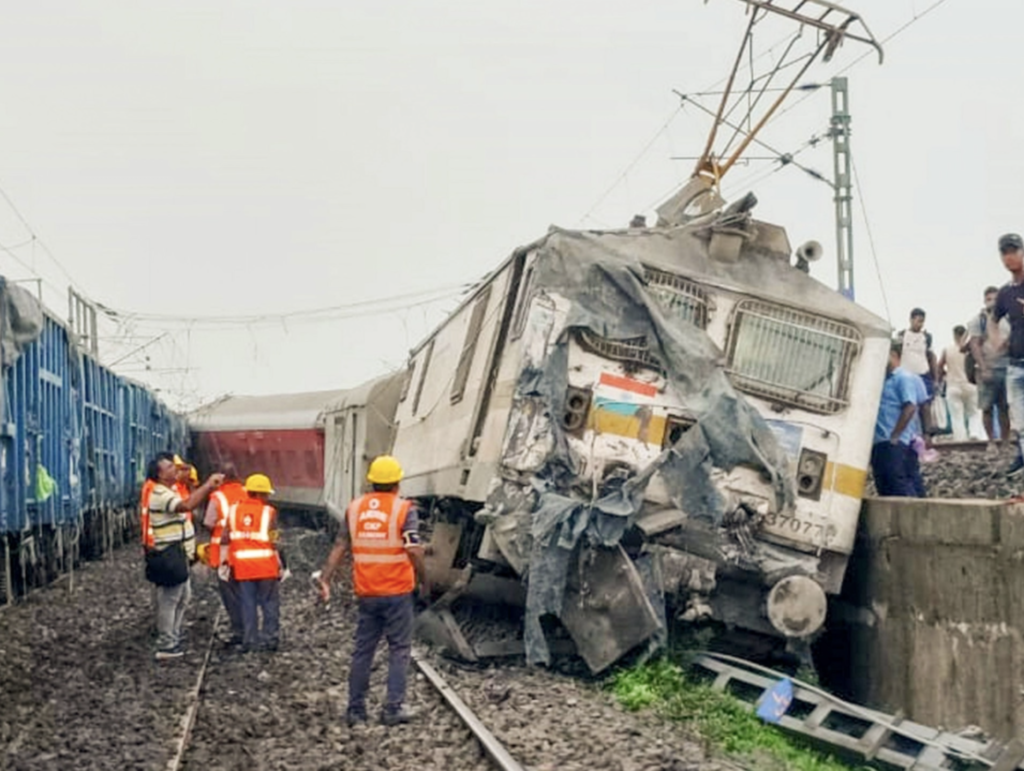Continuing Train Mishaps
Despite the Odisha rail tragedy last year, which claimed over 290 lives, India continues to face numerous train derailments. In the last six weeks, three passenger train accidents have resulted in 17 deaths and heightened safety concerns.
Recent Accident in Jharkhand
On Tuesday morning near Barabamboo in Jharkhand, 18 coaches of the Howrah-Mumbai Mail derailed, killing two and injuring more than 20. This accident highlights the ongoing safety concerns in India’s railways. Eyewitnesses reported that the derailment caused significant chaos and panic among passengers.
June and July Train Accidents
In June and July, three major train accidents have claimed approximately 17 lives and injured over 100 people.
- June 17 Accident: Two coaches of the Kanchanjunga Express derailed near New Jalpaiguri, resulting in 11 deaths and over 60 injuries. Officials attributed the collision to a goods train disregarding the signal and hitting the Kanchanjunga Express, which was en route from Agartala to Sealdah. The aftermath saw a massive rescue operation, with locals and emergency services working together to assist the injured.
- July 18 Accident: Eight coaches of a train near Uttar Pradesh’s Gonda railway station derailed, killing four and injuring more than 35. Officials suspect track sabotage as a possible cause. The derailment left the track mangled and caused severe disruptions to the rail service in the area.
- July 30 Accident: The Howrah-Mumbai Mail collided with a goods train, causing another deadly accident. Preliminary investigations suggest signaling errors or miscommunication between train operations as potential causes. Rescue teams had to work through the night to ensure all passengers were accounted for.
These incidents often stem from signaling glitches or track safety issues, highlighting the need for more robust safety measures.

Where Is the Safety ‘Kavach’?
This year, the Indian Railways received an allocation of Rs 2.52 lakh crore. According to the Economic Survey 2023-24, capital expenditure in the railways has increased by 77 percent over the past five years to Rs 2.62 lakh crore in FY24. Despite this investment, passenger safety progress remains slow.
Train mishaps have decreased from 473 in 2000-01 to 135 in 2014-15, and further to 48 in 2022. However, the implementation of the Kavach system, a crucial safety measure, has been sluggish. The budget allocated Rs 1112.57 crore for Kavach. Currently, it operates on 1,445 km of the 69,000 km rail network and 139 locomotives out of 14,800. Efforts are underway to expand its coverage to 4,500 km in the next fiscal year. Kavach is designed to automatically halt trains when it detects signals being ignored, which could prevent many accidents caused by human error.
Signaling Needs Overhaul
Railway safety and punctuality are crucial. The Indian Railways have transitioned from manual methods to electronic interlocking systems, which consist of signals, points, and electrical track circuits that detect a train’s presence on the track. As of FY24, 46 percent of 7,325 railway stations have switched to electronic interlocking.
Two systems manage train operations: the Absolute Block System and the Automatic Block System. The Absolute Block System permits only one train to travel between stations at a time, while the Automatic Block System divides routes into sections based on distance. Automatic signals change colors to indicate danger, caution, attention, and clarity, maintaining a safe distance between trains to minimize collision risks.
The Automatic Block System currently covers 4,431 kilometers of the railway network’s 68,000-kilometer total route length. However, the high number of signals and trains within these sections increases the likelihood of failures. This complexity can lead to miscommunications and errors, especially during peak operational times.
Experts highlight that while signaling systems are designed to be fail-safe, accidents often occur due to procedural lapses and a lack of a strong safety culture. “The issue isn’t with the signaling system itself,” explains Subodh Jain, a former member of the Railway Board. “If the wiring in the electrical system is not connected properly, you can’t blame the system for the resulting issues.”
To prevent future accidents, experts recommend stringent checks and maintenance of existing systems, better training for railway staff, and a faster rollout of advanced safety technologies like Kavach. The need for a stronger safety culture within the Indian Railways is critical to ensuring the safety of millions of passengers who rely on this vital mode of transportation.